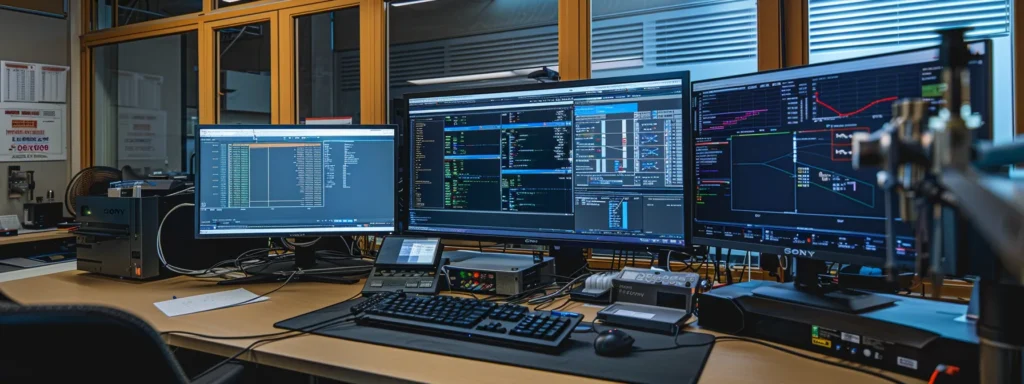
Gourmet Burger Recipes That Impress Every Palate
Are you tired of the same old burgers that lack excitement? Our gourmet burger recipes will elevate your grilling game and impress every palate at your next gathering. In this blog post, I’ll share essential ingredients for gourmet burgers, cooking techniques that maximize flavor, and unique toppings to make your creations stand out. By the end, you’ll not only solve the problem of boring meals but also discover how to craft mouthwatering burgers that will delight both friends and family. Let’s get started on reimagining your burger experience!
Key Takeaways
- Selecting high-quality meat is essential for creating delicious gourmet burgers
- Unique toppings and seasonings enhance flavor and elevate the dining experience
- Proper cooking techniques, like using a meat thermometer, ensure juicy results
- Chilling patties before grilling helps maintain their shape during cooking
- Pairing gourmet burgers with tasty sides and drinks enhances the overall meal experience
What Makes a Burger Gourmet and Delightful?

When I think about what makes a burger truly gourmet, the quality of the meat stands out first. Using high-quality beef that is seasoned perfectly with salt and pepper adds depth and flavor. A good blend of seasoning can elevate the taste, making each bite memorable.
Another essential element is how I prepare the toppings. A fresh onion, whether caramelized or raw, alongside a beautifully cooked yolk, can enhance the overall experience significantly. I aim for a balance of textures and flavors, ensuring that every component complements the juicy patty.
Finally, the finishing touch often comes from a rich barbecue sauce or a unique homemade condiment. This addition not only ties the flavors together but also adds a delightful complexity. Each gourmet burger I create becomes a culinary art piece, crafted to impress every palate.
Essential Ingredients for Gourmet Burgers

When crafting gourmet burgers, I focus on selecting the best quality meat, usually ground with the right fat-to-lean ratio for flavor. Unique seasonings and spices elevate the taste, while artisan buns enhance the overall meal experience. I also love experimenting with gourmet cheese options that melt beautifully, ensuring each burger is not just a dish, but a delightful creation.
Selecting the Best Quality Meat
Selecting the best quality meat is crucial for creating a gourmet burger that stands out. I recommend using ground beef with a fat content of around 20%, which contributes to a juicy, flavorful bite. To ensure the meat is cooked perfectly, using a meat thermometer helps achieve the ideal temperature while maintaining tenderness, which is essential, especially when pairing with toppings like aioli or even serving alongside macaroni and cheese for a unique twist:
| Meat Type | Fat Content | Cook Temperature |
|---|---|---|
| Ground Beef | 20% | 160°F |
| Ground Turkey | 10-15% | 165°F |
| Ground Lamb | 15-20% | 160°F |
Choosing Unique Seasonings and Spices
When crafting gourmet burgers, I find that unique seasonings and spices are vital for achieving depth of flavor. Incorporating ingredients like brown sugar can enhance the natural sweetness of the meat, adding a delightful contrast that brings out the umami profile. I also often toss in a pinch of smoked paprika or cumin for an extra layer of complexity, which pairs wonderfully with sides like homemade potato salad. Moreover, by understanding the iron content in various spices, I can create not just delicious but also nutritionally enriching burgers that impress every palate.
Exploring Artisan Buns and Their Impact
Choosing the right artisan bun plays a crucial role in crafting gourmet burgers that not only satisfy but also impress. I prefer buns that have a slightly crispy exterior yet remain soft on the inside, allowing them to hold up against juicy patties and flavorful toppings. For instance, a garlic powder-infused brioche adds an unexpected depth, perfectly complementing a short ribs patty nestled within, or even a seasoned chicken burger crafted with a tablespoon of your favorite herbs to heighten the flavor profile. Each bite becomes a harmonious combination where the bun enhances the entire culinary experience.
Adding Gourmet Cheese Options
In my experience, selecting gourmet cheese can genuinely transform a burger, adding rich flavors and additional nutrition. I often opt for cheeses like blue cheese or goat cheese, which not only provide a creamy texture but also pack a calcium punch that complements the patty perfectly. For a unique twist, I like incorporating sautéed mushrooms and fresh herbs to create a delightful array of tastes that balances the richness of the cheese, allowing me to craft burgers that truly impress every palate.
Creating Flavorful Gourmet Burger Patties

To create flavorful gourmet burger patties, I focus on key techniques that ensure each bite is juicy and well-balanced. Mixing techniques that involve using olive oil and a teaspoon of mayonnaise help maintain moisture. Shaping perfect patties allows for even cooking, while chilling them boosts grilling results, ensuring they fit perfectly on a toasted bun. I also incorporate ingredients like jalapeño for an added kick, elevating the flavor profile significantly.
Mixing Techniques for a Juicy Patty
To ensure a juicy patty, I pay close attention to my mixing techniques. I often use high-quality beef, combining it with Worcestershire sauce for a depth of flavor and a touch of onion powder that provides a subtle backbone. Additionally, adding a sprinkle of sugar not only balances the flavors but also aids in achieving a nice caramelization while grilling. It is essential to mix the ingredients gently to avoid overworking the meat, which can lead to a dense texture that doesn’t cater to a satisfying bite.
- Select high-quality beef for the best taste.
- Incorporate Worcestershire sauce for added flavor.
- Use onion powder to enhance the patty’s flavor profile.
- Add sugar for balance and caramelization.
- Mix gently to maintain a tender texture.
Shaping Perfect Patties for Even Cooking
When it comes to shaping perfect patties for even cooking, I prioritize a simple yet effective approach. Using ground beef with the right fat content is essential; I often choose a blend that contains about 20% fat for juicy results. To further enhance flavor, I like to incorporate grated parmesan cheese directly into the meat mixture, creating an enjoyable richness that seamlessly ties together with toppings like salsa. Additionally, ensuring that the patties are shaped uniformly allows for even roasting, preventing any sections from becoming overcooked or dry, which is critical for optimal sodium balance in each bite:
| Patty Feature | Importance | Recommended Action |
|---|---|---|
| Fat Content | Ensures juiciness | Use 20% fat for best results |
| Parmesan | Adds richness | Incorporate into the meat mixture |
| Uniform Shape | Ensures even cooking | Shape patties consistently |
Chill the Patties for Optimal Grilling
Chilling the patties before grilling is a simple yet effective technique that enhances the cooking process. I find that placing the patties in the refrigerator for at least 30 minutes allows them to firm up, which helps maintain their shape during cooking. This is especially important when grilling gourmet burgers that may include unique toppings like shrimp and asparagus, ensuring everything holds together perfectly while achieving that juicy, delicious result.
| Patty Feature | Importance | Recommended Action |
|---|---|---|
| Chilling | Maintains shape | Refrigerate for at least 30 minutes |
| Ingredient Pairing | Adds flavor | Incorporate shrimp and asparagus for variety |
| Texture | Ensures juiciness | Grill chilled patties for best results |
Cooking Techniques for Gourmet Burgers

When preparing gourmet burgers, my cooking techniques significantly impact the final taste. I’ll compare grilling versus pan-searing, emphasizing how each method enhances flavor. I’ll also discuss achieving the perfect internal temperature for safety and satisfaction. Lastly, adding toppings like garlic during cooking elevates the seasoning and nutrients, ensuring every bite impresses even the most discerning palate.
Grilling vs. Pan-Seering for Flavor
When it comes to preparing gourmet burgers, the choice between grilling and pan-searing profoundly affects flavor. I often favor grilling as it imparts a smoky char that enhances the taste of the meat, especially with ingredients like fresh basil and a squeeze of lemon to brighten the dish. However, pan-searing provides a delicious crust that seals in juices, making each bite a savory experience, particularly when paired with a soft brioche bun that complements rich toppings such as pork or gourmet cheeses:
- Select between grilling and pan-searing based on desired flavor.
- Grilling delivers a smoky char and depth to every bite.
- Pan-searing creates a flavorful crust while retaining moisture.
- Consider pairing aromatic ingredients like basil and lemon for added zest.
- Choose a brioche bun to enhance texture and taste for the ultimate gourmet experience.
Achieving the Perfect Internal Temperature
To achieve the perfect internal temperature for gourmet burgers, I always rely on a meat thermometer, ensuring the center reaches 160°F for safety while keeping the patty juicy. I often pair these burgers with crispy French fries for a delightful contrast in texture. I also find that using parchment paper under the burgers helps retain moisture, while adding a layer of gouda cheese or breadcrumbs during the final moments of cooking can enhance flavor without compromising the desired doneness.
Adding Toppings During Cooking for Great Flavor
Incorporating toppings during the cooking process can elevate your gourmet burger experience significantly. For example, while preparing a cheeseburger, I often add slices of truffle cheese in the last few minutes of grilling to allow it to melt perfectly, contributing a rich flavor. Similarly, when baking my veggie burger, I like to include sautéed onions and mushrooms right in the pan, resulting in a flavorful blend that enhances texture and depth without introducing gluten, making it appealing to a broader audience.
Unique Gourmet Toppings to Elevate Your Burger

Specialty sauces can transform the flavor of any gourmet burger, creating a delicious explosion of taste. I love incorporating fresh veggie options like scallions, which add both crunch and dietary fiber. Creative additions such as fried eggs and crispy bacon not only enhance richness but also bring excitement to every bite, making these toppings key players in my burger recipes.
Using parchment paper during preparation ensures the flavors meld perfectly, especially when the burger includes unique ingredients like rice for added texture. With this approach, I guarantee each burger lives up to the gourmet experience I aim to deliver.
Specialty Sauces for a Flavor Explosion
Specialty sauces can dramatically transform a burger, offering a delicious explosion of taste that enhances the overall experience. I love to incorporate ingredients like Worcestershire sauce and smoked paprika into my sauces, as they add complexity and a depth of flavor with each bite. Additionally, a well-balanced sauce can bring out the richness of the patty while complementing fresh toppings like lettuce, ensuring every component works harmoniously together:
| Sauce Ingredients | Flavor Profile | Perfect Pairings |
|---|---|---|
| Worcestershire Sauce | Savory and umami | Beef patties and crispy bacon |
| Smoked Paprika | Rich and smoky | Grilled chicken and fresh veggies |
| Garlic Aioli | Creamy and garlicky | Veggie patties and caramelized onions |
Fresh and Unique Veggie Options
When crafting gourmet burgers, I often turn to fresh and unique veggie options to enhance both flavor and texture. For instance, I love adding sautéed mushrooms mixed with onion soup, which not only brings out a savory richness but also adds moisture to the burger. Additionally, incorporating roasted rib vegetables can introduce a delightful contrast; their natural sweetness balances the savory elements of the dish while keeping saturated fat content in check, creating a satisfying, health-conscious burger experience.
Creative Additions Like Fried Eggs and Bacon
Incorporating fried eggs and crispy bacon into my gourmet burgers adds an exciting layer of flavor that truly impresses every palate. The richness of the fried egg, combined with the savory crunch of bacon, creates a delicious mixture that enhances the taste of ground beef. I often pair these ingredients with a drizzle of mustard, balancing the overall flavor profile while making each bite a memorable culinary experience:
- Fried eggs provide a creamy texture and richness.
- Crispy bacon adds a delightful crunch and savory flavor.
- Mustard creates a tangy contrast to the richness of the toppings.
Pairing Sides and Beverages With Gourmet Burgers

Delicious side dishes play a crucial role in enhancing gourmet burgers. I often pair my burgers with crispy potato wedges, expertly seasoned for maximum flavor, prepared in the cast iron on the stove. Selecting the right beverages, such as a craft beer or a refreshing lemonade, further elevates the meal experience, especially when complemented by rich brisket or barbecue flavors.
Delicious Side Dishes That Complement Hamburgers
When enjoying gourmet burgers, I find that pairing delicious side dishes can truly enhance the dining experience. A creamy coleslaw offers a refreshing crunch that beautifully contrasts with the juicy patty, while a rich cheddar cheese casserole adds a comforting, cheesy delight. For an exotic twist, I sometimes incorporate coconut into my sides, whether in a salad or as part of a light dip, creating a harmonious balance that complements the bold flavors of the burger.
Choosing the Right Beverages for Your Gourmet Meal
When I consider the right beverages to complement gourmet burgers, I focus on achieving a balance that matches the flavor profile of my meal. For instance, pairing a robust craft beer with a burger seasoned with black pepper enhances the overall taste, while a refreshing lemonade can offer a delightful contrast. I also pay attention to the doneness of the meat and the heat levels of my toppings, as these factors influence the beverage choice; a slightly sweeter drink can offset the richness of a juicy patty topped with sautéed ingredients rich in vitamin A, ensuring each bite and sip creates an impressive culinary experience.
Storing and Reheating Leftover Gourmet Burgers

When I have leftover gourmet burgers, I always store them properly to maintain their quality. I wrap each burger tightly in plastic wrap or aluminum foil to prevent moisture loss and place them in an airtight container in the refrigerator. This method keeps the flavors intact, making the next meal just as delightful as the first, especially when paired with fresh carrots or dill for a refreshing crunch.
Reheating is crucial for preserving the deliciousness of my gourmet burgers. I prefer using an oven or skillet to warm them; this method retains their juicy texture while ensuring even heat distribution. Microwaving can cause the buns to become soggy, a fate I like to avoid, even if I’m tempted to recreate a big mac-style burger using my leftovers.
If I have leftover patties, I sometimes mix them into a hearty salad or blend them with scrambled eggs for a unique breakfast option. Incorporating spam along with vegetables high in carbohydrates adds a savory twist for a satisfying meal. This way, I enjoy my gourmet creations long after the initial feast, keeping every bite enjoyable and flavorful.
More Gourmet Burger Recipes to Satisfy Every Craving

One of my favorite gourmet burger recipes includes a delicious bean patty topped with American cheese and a crispy onion ring. This combination offers a satisfying crunch along with rich flavors, making it a favorite for both meat lovers and vegetarians alike.
For a refreshing twist, I often create a burger featuring iceberg lettuce as a base, combining grilled chicken with a zesty sauce. The crisp texture of the lettuce complements the savory ingredients, while the moderate amounts of vitamin-rich toppings elevate the nutritional profile of the meal.
Another impressive option is a classic beef burger loaded with sautéed mushrooms and melted American cheese, served alongside a side of sweet potato fries. The balance of flavors and textures makes this dish a delightful choice for any gourmet burger lover:
| Burger Type | Main Ingredient | Key Topping | Side Dish |
|---|---|---|---|
| Bean Burger | Black Bean Patty | Onion Ring | Fries |
| Grilled Chicken Burger | Grilled Chicken | Iceberg Lettuce | Sweet Potato Fries |
| Beef Burger | Ground Beef | American Cheese | Sweet Potato Fries |
Join Our Community for More Culinary Inspiration

In my culinary journey, I have discovered that integrating ingredients like blue cheese into gourmet burgers can create an elevated flavor profile. The creamy texture combined with the robust taste of the beef offers a delightful experience that impresses every palate.
Each time I prepare a gourmet burger, I pay attention to caramelization, ensuring that ingredients like onions develop their natural sugars. This process not only enhances the overall taste but also adds a layer of sophistication to the presentation.
Using a spatula to skillfully apply condiments allows for a perfect balance of flavors. I often sprinkle a dash of powder, such as garlic or smoked paprika, to create an irresistible aroma that enhances the gourmet experience:
| Ingredient | Preparation Method | Key Flavor Contribution |
|---|---|---|
| Blue Cheese | Crumbled on top | Rich and creamy |
| Onions | Caramelized | Sweet and savory |
| Condiments | Evenly spread | Flavor enhancement |















